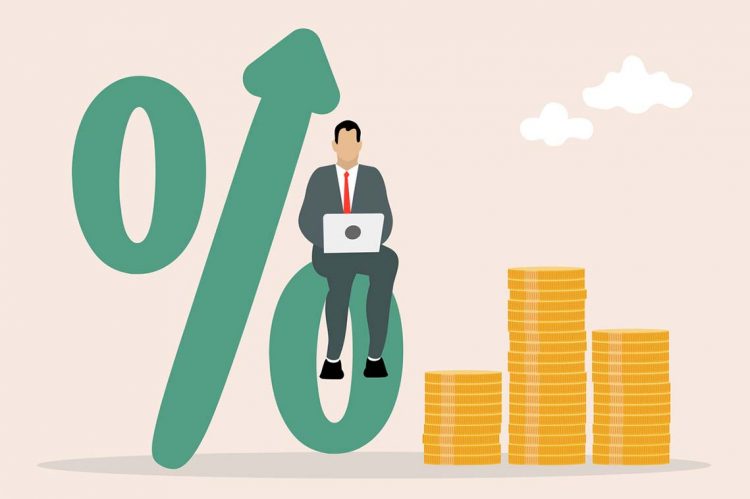Many experts’ and analysts’ predictions became a reality Wednesday, as the Federal Reserve confirmed that it would make its first of several interest rate hikes.
Fed officials announced that they would raise their benchmark federal-funds rate by a quarter percentage point to a range between 0.25% and 0.5% from near zero. The hike, which will take effect on March 17, is the first increase in rates since 2018.
It also kicks off a series of hikes that pundits and analysts forecasted for months. In a statement following its two-day meeting, the Fed said it “anticipates that ongoing increases in the target range will be appropriate.”
“In addition, the Committee expects to begin reducing its holdings of Treasury securities and agency debt and agency mortgage-backed securities at a coming meeting,” read the statement.
Despite recent economic improvements in job gains and unemployment, the Fed acknowledged that pandemic-induced supply chain disruptions coupled with “higher energy prices, and broader price pressures,” have elevated inflation.
The latter factors have also been tied to the recent Russian invasion of Ukraine in February, which the Fed statement also noted in its claim is “causing tremendous human and economic hardship.”
The impacts of the geopolitical situation have already started to weigh on inflation, which hit a 40-year high year-over-year increase in February at 7.9%, with core inflation at 6.4%.
In a press conference after the meeting, Fed chair Jerome Powell addressed the impacts of the persisting invasion in Ukraine.
“The surge in prices for crude oil and other commodities that resulted from Russia’s invasion of Ukraine will put additional upward pressure on near-term inflation here at home,” Powell said.
While he admitted that the Ukraine situation represents “a downside risk for economic activity,” Powell indicated that the Fed still expects the economy to see “solid growth.”
“The economy is very strong, and against the backdrop of an extremely tight labor market and high inflation, the committee anticipates that an ongoing increase in the target range of the federal funds rate will be appropriate,” Powell said.
According to Powell, the median projection for real GDP growth stands at 2.8% this year and is expected to hit 2.2% and 2% in 2023 and 2024, respectively.
Powell also said “appropriate firming” in the Fed’s monetary policy will play a significant role in getting inflation back to 2% without dealing a crippling blow to the progress in the labor market.
“That said, inflation is likely to take longer to return to our price stability goal than previously expected,” Powell said, adding that the median inflation projection is 4.3% for 2022 and is expected to fall to 2.7% and 2.3% in 2023 and 2024, respectively.
“This trajectory is notably higher than projections in December, and participants continue to see risks as weighted to the upside,” Powell added.
Powell also indicated that the Fed would start reducing the size of its balance sheet in a future FOMC meeting.
With the first interest rate hike coming, experts pondered the possible impacts to mortgage rates.
Experts from the Mortgage Bankers Association (MBA) say they are hopeful that Fed’s actions can help subdue some of the uncertainty in the market that has contributed to recent shifts in the mortgage rate environment.
“With the unemployment rate below 4%, inflation nearing 8%, and the war in Ukraine likely to put even more upward pressure on prices, this is what the Fed needs to do to bring inflation under control,” said Mike Fratantoni, MBA SVP, and chief economist.
Fratantoni went on to say, “MBA forecasts that mortgage rates will rise further over the next year to around 4.5%. Mortgage rates have been exceptionally volatile in recent weeks, given the profound uncertainties both with respect to the geopolitical situation and monetary policy.”
Danielle Hale, chief economist at realtor.com®, said she expects mortgage rates to continue climbing as the market digests the Fed’s updated economic projections.
According to Hale, she doesn’t anticipate any spikes in mortgage rates following Wednesday’s announcement.
“I anticipate a continued increase in mortgage rates over the next several months consistent with today’s statement that indicated an ‘appropriate firming in the stance of monetary policy,’ and that ‘the Committee expects to begin reducing its holdings of at a coming meeting,’” she says.
 Jordan Grice is RISMedia’s associate online editor. Email him your real estate news to jgrice@rismedia.com.
Jordan Grice is RISMedia’s associate online editor. Email him your real estate news to jgrice@rismedia.com.












